 服务热线电话
服务热线电话
400-6188-756
全自动多槽超声波清洗机的终极答案:一份让工程师大开眼界的10大应用清单
来源:http://www.sinokohl.com/ 时间: 2025-10-20 浏览次数: 0
除了眼镜首饰,它还能洗什么?当技术人员谈论超声波清洗机时,思维范畴应超越常见的眼镜与首饰清洗。本文将从“空化效应”的物理本质出发,深入剖析其在不同工业领域及精密维护场景下的独特优势,系统列举10类突破常规认知的应用实例,并提供详尽的技术原理分析与操作要点。引言:重新定义“清洗”的边界对工程师与技术专家而言,超声波清洗机远非普通的消费级家电,它是一种基于物理原理的高效问题解决工具。其核心价值在于,实现了传统接触式清洗方法难以达成的?“无死角”与“基底零损伤”?的清洁效果。传统的刷洗、冲洗等工艺依赖宏观流体的剪切力,在面对复杂几何结构、脆弱材料或微米/纳米级污染物时,往往效率低下甚至完全无效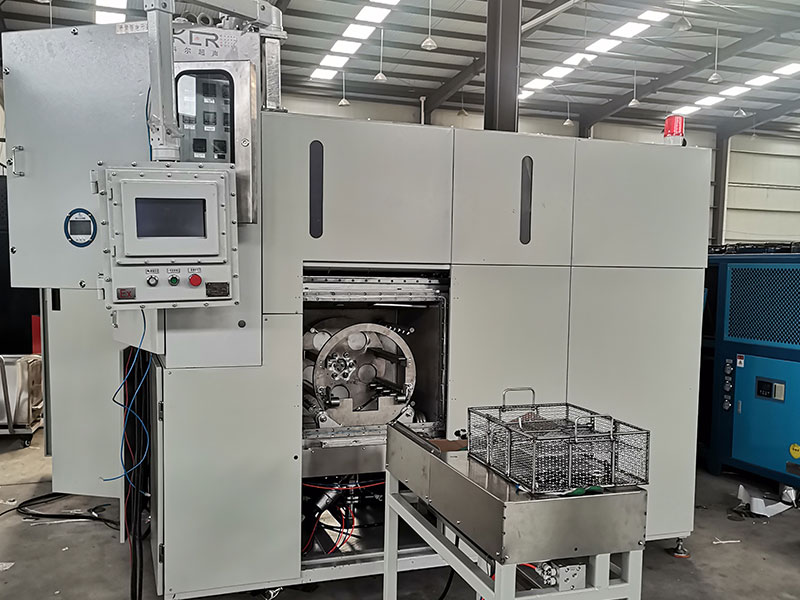
What else can it wash besides glasses and jewelry? When technicians talk about ultrasonic cleaning machines, their thinking should go beyond the common cleaning of glasses and jewelry. This article will start from the physical essence of the "cavitation effect", deeply analyze its unique advantages in different industrial fields and precision maintenance scenarios, systematically list 10 application examples that break through conventional cognition, and provide detailed technical principle analysis and operational points. Introduction: Redefining the boundary of "cleaning" For engineers and technical experts, ultrasonic cleaning machines are far from ordinary consumer appliances. They are an efficient problem-solving tool based on physical principles. Its core value lies in achieving what traditional contact cleaning methods find difficult to achieve? 'No dead corners' and' zero damage to the substrate '? The cleaning effect. Traditional brushing, rinsing and other processes rely on the shear force of macroscopic fluids, which often results in low efficiency or even complete ineffectiveness when facing complex geometric structures, fragile materials or micro/nano scale pollutants
。超声波清洗技术通过空化效应,将清洗的作用维度从宏观尺度降至微观领域,真正实现了从“表面清洁”到“体相清洁”?的跨越。在展开具体应用清单前,我们有必要对其核心物理原理进行简要回顾,这将为理解后续多样化的应用场景奠定坚实的理论基础。技术基础回顾:空化效应的工程学解读空化效应,本质上是液体介质中存在的微米级气泡(空化泡)在特定频率声波作用下,所经历的“成核、振荡、溃灭”这一完整动力学过程。能量来源:压电陶瓷换能器将高频电信号(典型范围为20-40kHz)转换为同频率的机械振动,并通过清洗槽壁向液体介质中辐射声波。气泡成核:声波在液体中形成疏密相间的压力场。在负压(稀疏相)周期,局部压力低于液体的饱和蒸气压时,液体被“拉裂”,形成内含液体蒸气及溶解气体的微米级空化泡。剧烈溃灭:在紧随的正压(压缩相)周期,这些空化泡在极短时间内(微秒量级)失去稳定并发生崩溃式溃灭。此过程将声场能量在极小空间内极度聚焦,产生瞬时的极端高温(>5000K)、高压(>1000atm),并激发出强烈的冲击波与时速超过400公里的微射流。关键理解点:超声波清洗的主力并非声波本身,而是空化泡溃灭时释放的集中机械能。这种能量的作用范围极小,但其强度足以破坏污染物与基底之间的物理吸附力,同时通常不会对基底材料本身造成损伤(前提是工艺参数设置正确)。10大令人大开眼界的清洗清单(技术人员版)以下清单中的物品,均充分运用了超声波清洗所独有的三维渗透、非接触作用、高能量密度等技术特性。
Ultrasonic cleaning technology uses cavitation effect to reduce the dimension of cleaning from macro scale to micro scale, truly achieving the transition from "surface cleaning" to "bulk cleaning"? The leap. Before expanding the specific application list, it is necessary to briefly review its core physical principles, which will lay a solid theoretical foundation for understanding the diverse application scenarios in the future. Technical Basis Review: Engineering Interpretation of Cavitation Effect Cavitation effect is essentially the complete dynamic process of "nucleation, oscillation, and collapse" experienced by micrometer sized bubbles (cavitation bubbles) in liquid media under the action of specific frequency sound waves. Energy source: Piezoelectric ceramic transducers convert high-frequency electrical signals (typically ranging from 20-40kHz) into mechanical vibrations of the same frequency, and radiate sound waves into the liquid medium through the cleaning tank wall. Bubble nucleation: Sound waves form a pressure field with alternating density in a liquid. In the negative pressure (sparse phase) cycle, when the local pressure is lower than the saturated vapor pressure of the liquid, the liquid is "pulled apart", forming micro scale cavitation bubbles containing liquid vapor and dissolved gases. Intense collapse: In the following positive pressure (compression phase) cycle, these cavitation bubbles lose stability in a very short time (microsecond level) and undergo a collapse like collapse. This process focuses the energy of the sound field extremely in a very small space, generating instantaneous extreme high temperatures (>5000K), high pressures (>1000atm), and exciting strong shock waves and microjets with speeds exceeding 400 kilometers per hour. Key understanding point: The main force of ultrasonic cleaning is not the sound waves themselves, but the concentrated mechanical energy released when cavitation bubbles collapse. The range of action of this energy is extremely small, but its strength is sufficient to destroy the physical adsorption force between pollutants and the substrate, while usually not causing damage to the substrate material itself (provided that the process parameters are set correctly). 10 Eye Opening Cleaning Checklist (Technician Version) The items listed below fully utilize the unique technical characteristics of ultrasonic cleaning, such as three-dimensional penetration, non-contact effect, and high energy density.
1. 精密五金零件:冲压件、轴承、螺丝
1. Precision hardware parts: stamped parts, bearings, screws
技术挑战:冲压油、切削液、抛光膏等顽固的润滑冷却介质极易渗入螺纹、缝隙等微观结构,传统浸泡或喷淋清洗效率低下,且存在二次污染风险。超声波解决方案:空化效应产生的高速微射流能穿透零件最细微的缝隙,将附着在表面的油污和颗粒物彻底剥离。对于高精度轴承,该方法避免了机械刷洗导致的划伤,完美保持其原始公差与表面光洁度。技术要点:建议使用水性工业清洗剂,并配合加热(40-60°C)以有效降低油脂粘度。频率推荐选择25-40kHz,以获得最佳的清洗力度。
Technical challenge: Stubborn lubricating and cooling media such as stamping oil, cutting fluid, polishing paste, etc. are prone to penetrate microstructures such as threads and gaps. Traditional soaking or spray cleaning methods have low efficiency and pose a risk of secondary pollution. Ultrasonic solution: The high-speed micro jet generated by cavitation effect can penetrate the smallest gaps of the parts, completely peeling off the oil stains and particles attached to the surface. For high-precision bearings, this method avoids scratches caused by mechanical brushing, perfectly maintaining their original tolerances and surface smoothness. Technical points: It is recommended to use water-based industrial cleaning agents and combine them with heating (40-60 ° C) to effectively reduce the viscosity of oil. The recommended frequency is 25-40kHz for optimal cleaning power.
2. 印刷电路板(PCB)与SMT钢网
2. Printed Circuit Board (PCB) and SMT Steel Mesh
技术挑战:焊接后的助焊剂残留物(主要为松香及其衍生物)具有粘性,不仅影响外观,更会吸附灰尘并可能引发电化学迁移,导致电路失效。SMT钢网的微米级网孔极易被锡膏堵塞。超声波解决方案:微射流能有效冲击PCB上元器件底部的缝隙及焊点周围,清除隐藏的助焊剂。对于钢网,它能实现无物理接触的精准清洁,确保每一个网孔的畅通,保障锡膏印刷质量。技术要点:务必谨慎!?强烈的超声波振动可能损坏某些对应力敏感的电子元件(如石英晶振、MEMS器件)。必须使用专用电子清洗液(具备低残留、不导电特性),并建议采用较高频率(≥40kHz)?与较短的清洗时间,事先进行严格的工艺验证。
Technical challenge: The residual flux after welding (mainly rosin and its derivatives) has viscosity, which not only affects the appearance, but also adsorbs dust and may cause electrochemical migration, leading to circuit failure. The micro scale mesh holes of SMT steel mesh are easily blocked by solder paste. Ultrasonic solution: Micro jet can effectively impact the gaps and solder joints at the bottom of PCB components, removing hidden soldering flux. For steel mesh, it can achieve precise cleaning without physical contact, ensuring the smoothness of each mesh and guaranteeing the quality of solder paste printing. Technical point: Be cautious!? Intense ultrasonic vibration may damage certain stress sensitive electronic components, such as quartz crystal oscillators and MEMS devices. Must use specialized electronic cleaning solution (with low residue and non-conductive properties), and it is recommended to use a higher frequency (≥ 40kHz)? Conduct strict process validation in advance with shorter cleaning time.
3. 实验室器皿:移液器吸头、玻璃瓶、石英比色皿
3. Laboratory utensils: pipette tip, glass bottle, quartz colorimetric dish
技术挑战:痕量与超痕量分析要求器皿达到分子级洁净度,任何微小残留都会对后续实验造成交叉污染。移液器内部复杂的流道难以通过常规方法彻底清洁。超声波解决方案:为实验室提供了可靠、且结果可重复的标准化清洗方案。它能有效清洗移液器内部,清除蛋白质、核酸等生物大分子残留。对于玻璃和石英器皿,能高效去除顽固的无机盐沉淀和有机污染物。技术要点:需根据污染物化学性质针对性选择清洗液(如酸性清洗液用于去除无机盐垢,碱性清洗液用于分解有机残留)。清洗后建议使用超纯水进行超声波辅助漂洗,以最大限度减少水痕残留。
Technical challenge: Trace and ultra trace analysis requires vessels to achieve molecular level cleanliness, and any small residue will cause cross contamination in subsequent experiments. The complex flow channels inside the pipette are difficult to thoroughly clean using conventional methods. Ultrasonic solution: Provides a reliable and reproducible standardized cleaning solution for laboratories. It can effectively clean the interior of the pipette and remove residues of biomolecules such as proteins and nucleic acids. For glass and quartz vessels, it can efficiently remove stubborn inorganic salt precipitates and organic pollutants. Technical points: It is necessary to select cleaning solutions based on the chemical properties of pollutants (such as acidic cleaning solutions for removing inorganic salt deposits, and alkaline cleaning solutions for decomposing organic residues). After cleaning, it is recommended to use ultrapure water for ultrasonic assisted rinsing to minimize water residue.
4. 汽车喷油嘴与燃油滤清器
4. Automotive fuel injectors and fuel filters
技术挑战:喷油嘴的精密喷孔因长期使用而易积聚碳化物,导致燃油雾化不良,直接影响发动机的燃烧效率与排放性能。超声波解决方案:已成为维修行业的标准化修复流程。空化效应能有效粉碎并剥离喷孔内壁的积碳和胶质沉积,恢复其原始流量特性和精准的喷雾形态。技术要点:需使用专用强力积碳清洗剂,并通常配合加热以增强反应活性。清洗后必须使用洁净压缩空气彻底吹干,并进行严格的性能测试以验证恢复效果。
Technical challenge: The precise nozzle holes of the fuel injector are prone to accumulate carbides due to long-term use, resulting in poor fuel atomization and directly affecting the combustion efficiency and emission performance of the engine. Ultrasonic solution: has become a standardized repair process in the maintenance industry. Cavitation effect can effectively crush and peel off the carbon deposit and colloid deposit on the inner wall of the nozzle, and restore its original flow characteristics and accurate spray shape. Technical points: It is necessary to use a specialized strong carbon deposition cleaning agent and usually combine it with heating to enhance reaction activity. After cleaning, it must be thoroughly dried with clean compressed air and undergo strict performance testing to verify the recovery effect.
5. 医疗器械:手术钳、牙科手机、内窥镜部件
5. Medical equipment: surgical forceps, dental mobile phones, endoscope components
技术挑战:医疗器械结构复杂,多含有铰链、锁扣和细长管腔,是血液、组织液和生物膜的潜在藏匿之所,若灭菌前清洗不彻底,将导致灭菌失败。超声波解决方案:被广泛用于医院消毒供应中心(CSSD)。它能有效清洁器械的关节和管腔内部,显著降低生物负载,为后续的高压蒸汽或低温等离子灭菌提供可靠前提。技术要点:必须使用医用多酶清洗剂,利用酶的特异性催化作用分解蛋白质、脂肪等生物污染物。清洗水温需精确控制(通常<45°C),以防止蛋白质变性凝固。必须遵循严格的清洗-漂洗-干燥标准化流程。
Technical challenge: Medical devices have complex structures, often containing hinges, locks, and slender lumens, which are potential hiding places for blood, tissue fluids, and biofilms. If not thoroughly cleaned before sterilization, it will lead to sterilization failure. Ultrasonic solution: widely used in hospital disinfection supply centers (CSSD). It can effectively clean the joints and lumen of instruments, significantly reduce biological load, and provide reliable prerequisites for subsequent high-pressure steam or low-temperature plasma sterilization. Technical points: Medical multi enzyme cleaning agents must be used to utilize the specific catalytic action of enzymes to decompose biological pollutants such as proteins and fats. The cleaning water temperature needs to be precisely controlled (usually<45 ° C) to prevent protein denaturation and coagulation. Strict cleaning rinsing drying standardized procedures must be followed.
6. 3D打印物件(树脂/金属)
6. 3D printed objects (resin/metal)
技术挑战:光固化(SLA/DLP)3D打印后,模型表面和内部通道中残留大量未固化的光敏树脂。金属3D打印(如SLS)件表面则附着未完全熔合的松散粉末。超声波解决方案:是后处理流程中的关键一步。能高效地将残留树脂从复杂的支撑结构和内部孔洞中置换、剥离出来。对于金属打印件,能温和且彻底地振落烧结在表面的多余金属粉末。技术要点:清洗光敏树脂件通常推荐两槽清洗法:先在工业酒精或专用清洗液中进行初步粗洗,再在新鲜液体中进行二次精洗。频率建议选用40kHz。
Technical challenge: After light curing (SLA/DLP) 3D printing, a large amount of uncured photosensitive resin remains on the surface and internal channels of the model. The surface of metal 3D printed parts (such as SLS) adheres loose powder that has not been fully fused. Ultrasonic solution: It is a crucial step in the post-processing process. Can efficiently displace and peel off residual resin from complex support structures and internal pores. For metal printed parts, it can gently and thoroughly shake off excess metal powder sintered on the surface. Technical points: Two tank cleaning method is usually recommended for cleaning photosensitive resin parts: first, perform preliminary coarse cleaning in industrial alcohol or specialized cleaning solution, and then perform secondary fine cleaning in fresh liquid. The recommended frequency is 40kHz.
7. 光学元件:镜头、棱镜、激光器晶体
7. Optical components: lenses, prisms, laser crystals
技术挑战:光学元件表面极其脆弱,对任何微观划伤都零容忍。灰尘、指纹等污染物会严重劣化光路传输质量和成像性能。超声波解决方案:提供了一种绝对非接触的精密清洗方式,能安全、高效地去除表面的亚微米级颗粒物和有机污染物,完全避免了擦拭法引入划痕或静电吸附的风险。技术要点:必须使用超高纯度溶剂(如HPLC级异丙醇)?或专用光学清洗剂。整个操作环境需在高等级洁净室中进行,严防二次污染。强烈推荐使用高频(≥80kHz)?模式,以获取极致柔和的清洗效果。
Technical challenge: The surface of optical components is extremely fragile and has zero tolerance for any microscopic scratches. Dust, fingerprints, and other pollutants can seriously degrade the quality of optical transmission and imaging performance. Ultrasonic solution: Provides an absolute non-contact precision cleaning method that can safely and efficiently remove submicron particles and organic pollutants on the surface, completely avoiding the risk of scratches or electrostatic adsorption introduced by wiping methods. Technical point: It is necessary to use ultra-high purity solvents (such as HPLC grade isopropanol)? Or specialized optical cleaning agents. The entire operating environment needs to be carried out in a high-level clean room to prevent secondary pollution. Strongly recommend using high frequency (≥ 80kHz)? Mode to achieve the ultimate soft cleaning effect.
8. 机械手表机芯与精密齿轮
8. Mechanical watch movements and precision gears
技术挑战:传统机械手表机芯由数百个微小零件构成,传统清洗完全依赖熟练技师在汽油中手工刷洗,效率极低,且存在损坏游丝等超精密部件的风险。超声波解决方案:已成为现代制表业的工业标准。可将整个机芯或零件篮浸入清洗,空化作用能深入每一个齿轮啮合处和宝石轴承孔,彻底清除老化的润滑油和磨损产生的金属碎屑。技术要点:普遍采用多槽式流程:强力清洗-多次漂洗-高效干燥。清洗液需为专用手表清洗油。频率选择40kHz可在清洁力与对精密部件的安全性之间取得最佳平衡。
Technical challenge: Traditional mechanical watch movements consist of hundreds of tiny parts, and traditional cleaning relies entirely on skilled technicians manually scrubbing in gasoline, resulting in extremely low efficiency and the risk of damaging ultra precision components such as hairspring. Ultrasonic solutions have become the industry standard in modern watchmaking. The entire movement or component basket can be immersed for cleaning, and cavitation can penetrate into every gear meshing point and gem bearing hole, thoroughly removing aged lubricating oil and metal debris generated by wear. Technical points: Multi slot process is commonly used: strong cleaning - multiple rinses - efficient drying. The cleaning solution should be specialized watch cleaning oil. Choosing a frequency of 40kHz can achieve the best balance between cleaning power and safety of precision components.
9. 古董、艺术品与电路板复刻
9. Antique, artwork, and circuit board reproductions
技术挑战:古董文物上的锈蚀、污垢需要在绝对不损伤文物本体和历史信息的前提下被清除。对于需要复刻或逆向工程分析的老旧电路板,需无损去除表面的阻焊层以清晰观察底层布线。超声波解决方案:能极其温和地松动锈蚀和积垢,避免机械打磨对文物造成的不可逆损失。对于电路板,配合特定温和溶剂可以有效软化并去除阻焊漆,而不损伤铜箔。技术要点:此类应用需极其谨慎,必须在非显眼处进行充分的局部测试。清洗液通常选择中性或弱酸性的温和溶液。超声波功率不宜过高,清洗时间需精确控制。
Technical challenge: Rust and dirt on antique cultural relics need to be removed without absolutely damaging the cultural relics themselves and historical information. For old circuit boards that require replication or reverse engineering analysis, it is necessary to remove the solder mask layer on the surface without damage to clearly observe the underlying wiring. Ultrasonic solution: It can gently loosen rust and scale, avoiding irreversible damage to cultural relics caused by mechanical polishing. For circuit boards, using a specific mild solvent can effectively soften and remove solder mask without damaging the copper foil. Technical points: Such applications require extreme caution and must undergo sufficient local testing in inconspicuous locations. Cleaning solutions are usually chosen as neutral or weakly acidic mild solutions. The ultrasonic power should not be too high, and the cleaning time should be precisely controlled.
10. 无人机电机与摄影设备云台
10. Drone motor and photography equipment gimbal
技术挑战:无人机无刷电机在沙尘环境中运行后,强磁性的转子和定子缝隙间会积聚大量磁性粉尘,影响电机效率、性能与散热。相机云台的滚珠轴承进灰或油脂固化会导致运行卡顿。超声波解决方案:能深入电机内部,将吸附的磁性粉尘彻底“震”出。能有效清洁云台复杂轴承结构内的旧油脂和污染物,恢复其顺滑精度。技术要点:清洗后必须彻底干燥(如放入可控温的烘箱),确保电机内部完全无水渍残留后方可重新通电。建议优先使用快干型、低残留的电子设备专用清洗液。技术选型与安全操作指南不当使用超声波清洗机,轻则清洗效果不佳,重则导致贵重物品永久性损坏。请严格遵循以下核心工程技术原则:
Technical challenge: After the drone brushless motor operates in a dusty environment, a large amount of magnetic dust will accumulate between the strong magnetic rotor and stator gaps, affecting the motor efficiency, performance, and heat dissipation. The ball bearings of the camera gimbal may become stuck due to dust or grease solidification during operation. Ultrasonic solution: It can penetrate deep into the interior of the motor and thoroughly shake out the adsorbed magnetic dust. It can effectively clean the old grease and pollutants inside the complex bearing structure of the gimbal, restoring its smooth accuracy. Technical points: After cleaning, the motor must be thoroughly dried (such as placing it in a temperature controlled oven) to ensure that there are no water stains or residues inside before it can be powered on again. It is recommended to prioritize the use of fast drying and low residue electronic device cleaning solutions. Improper use of ultrasonic cleaning machines can result in poor cleaning effectiveness or permanent damage to valuable items. Please strictly follow the following core engineering and technical principles:
频率选择是首要关键:低频(20-30kHz):空化强度高,冲击力猛烈,适用于重油污、大颗粒附着且结构坚固的硬质金属件清洗。高频(40kHz及以上):空化泡更细小、密集,能量分布更均匀柔和,穿透力强,适用于精密仪器、光学部件、有涂层或柔软材质的物品。
Frequency selection is the primary key: low frequency (20-30kHz): high cavitation intensity, strong impact force, suitable for cleaning hard metal parts with heavy oil stains, large particle adhesion, and sturdy structure. High frequency (40kHz and above): The cavitation bubbles are finer and denser, with a more uniform and gentle energy distribution, and strong penetration power. They are suitable for precision instruments, optical components, coated or soft materials.
清洗液的系统性选择:基础原则是“相似相溶”,但必须综合考量其安全性、腐蚀性、残留量以及对被清洗材料的相容性。水基清洗液:环保安全,成本较低,通常需配合加热使用(40-60°C),适用于大多数常见污染物。有机溶剂:对油脂、树脂类污染物溶解能力强,但普遍易燃易挥发,必须在具备防爆与强制通风的条件下使用。
Systematic selection of cleaning solution: The basic principle is "similar compatibility", but its safety, corrosiveness, residual amount, and compatibility with the cleaned material must be comprehensively considered. Water based cleaning solution: environmentally friendly and safe, with low cost, usually used in conjunction with heating (40-60 ° C), suitable for most common pollutants. Organic solvents: have strong solubility for oil and resin pollutants, but are generally flammable and volatile, and must be used under explosion-proof and forced ventilation conditions.
功率密度并非越高越好:过高的功率密度会在液体中产生过量空化泡,形成“声障”,反而散射声波能量,降低有效清洗效果,并可能对物品表面造成“空化腐蚀”。温度与时间的精密控制:适当加热(通常40-60°C)能显著降低清洗液粘度,提高分子热运动,从而大幅提升清洗效率。清洗时间需通过实验优化,并非越长越好。长时间、不必要的高强度清洗可能对物品造成累积性损伤或表面粗糙度增加。
The higher the power density, the better: too high a power density will generate excessive cavitation bubbles in the liquid, forming a "sound barrier", which will scatter the energy of sound waves, reduce the effective cleaning effect, and may cause "cavitation corrosion" on the surface of the object. Precise control of temperature and time: Proper heating (usually 40-60 ° C) can significantly reduce the viscosity of the cleaning solution, increase molecular thermal motion, and thus greatly improve cleaning efficiency. The cleaning time needs to be optimized through experiments, not the longer the better. Long term, unnecessary high-intensity cleaning may cause cumulative damage or increased surface roughness to the item.
明确禁忌,防范风险:天然宝石及多孔材料:如珍珠、欧泊、绿松石等,其多孔结构怕脱水,且剧烈振动可能导致内部结构损伤。特定涂层与镀层:某些结合力较弱的漆面、电镀层可能在高强度超声波作用下发生剥落或起泡。软性及弹性体材料:如部分塑料、硅胶,长期暴露于空化效应下,其表面可能被微射流侵蚀而变得粗糙。
Clear taboos and risk prevention: Natural gemstones and porous materials such as pearls, opals, turquoise, etc. have porous structures that are afraid of dehydration, and severe vibrations may cause internal structural damage. Specific coatings and plating layers: Some paint surfaces and electroplating layers with weak adhesion may peel off or bubble under high-intensity ultrasound. Soft and elastic materials, such as some plastics and silicone, may become rough on their surfaces due to long-term exposure to cavitation effects caused by micro jet erosion.
结语
Conclusion
对于追求极致工艺与创新解决方案的技术人员而言,超声波清洗机是一个充满无限潜能的精密工具。其能力边界,根本上取决于我们对其背后物理机制的深刻理解,以及跨领域应用的创造性思维。从万级洁净的生化实验室到油污遍布的汽车维修车间,从纳米尺度的半导体芯片到结构复杂的航空发动机部件,这项基于物理学的洁净技术,正以其不可替代的技术优势,持续攻克着各行各业中那些曾被视为“不可能”的清洁难题。
For technicians who pursue ultimate craftsmanship and innovative solutions, ultrasonic cleaning machines are precision tools full of infinite potential. The boundary of its ability fundamentally depends on our profound understanding of the underlying physical mechanisms and creative thinking in cross disciplinary applications. From clean biochemical laboratories at the 10000 level to oil contaminated car repair workshops, from nanoscale semiconductor chips to structurally complex aircraft engine components, this physics based clean technology, with its irreplaceable technological advantages, continues to overcome cleaning challenges that were once considered "impossible" in various industries.
当下次您面对一个看似“无法清洗”的精密物件时,或许可以思考:能否让这场发生在微观世界中的、每秒数百万次的精准能量爆发,为您提供一种前所未有的解决方案。
The next time you face a seemingly "uncleanable" precision object, perhaps you can consider whether the precise energy burst that occurs millions of times per second in the microscopic world can provide you with an unprecedented solution.
本文由 全自动多槽超声波清洗机 友情奉献.更多有关的知识请点击 http://www.jnthcsb.com/ 真诚的态度.为您提供为全面的服务.更多有关的知识我们将会陆续向大家奉献.敬请期待.
This article is a friendly contribution from the fully automatic multi slot ultrasonic cleaning machine For more related knowledge, please click http://www.jnthcsb.com/ Sincere attitude To provide you with comprehensive services We will gradually contribute more relevant knowledge to everyone Coming soon.
相关文章
-
全自动多槽超声波清洗机工作原理是怎样的?工业用高压清洗设备 清洗大型工业设备 2025-11-24
-
单工位旋转喷淋清洗机在使用的注意要点 2025-11-23
-
浅述全自动超声波清洗机四种不同过滤类型的各自特点 2025-11-22
-
全自动多槽超声波清洗机的常见故障解决方法分享 2025-11-21
-
还不会使用多槽式超声波清洗机?进来看 2025-11-20
-
高压去毛刺清洗机,让工件上的毛刺无所遁形 2025-11-19
-
CNC高压清洗机助力精密零件高效清洗 2025-11-18
-
通过式喷淋清洗机的原理是什么? 2025-11-17
-
喷淋清洗机与传统清洗方式相比,到底有何优势? 2025-11-15
-
这些关键因素在选择多槽手动超声波清洗机时要多加考虑 2025-11-14


 新闻中心
新闻中心
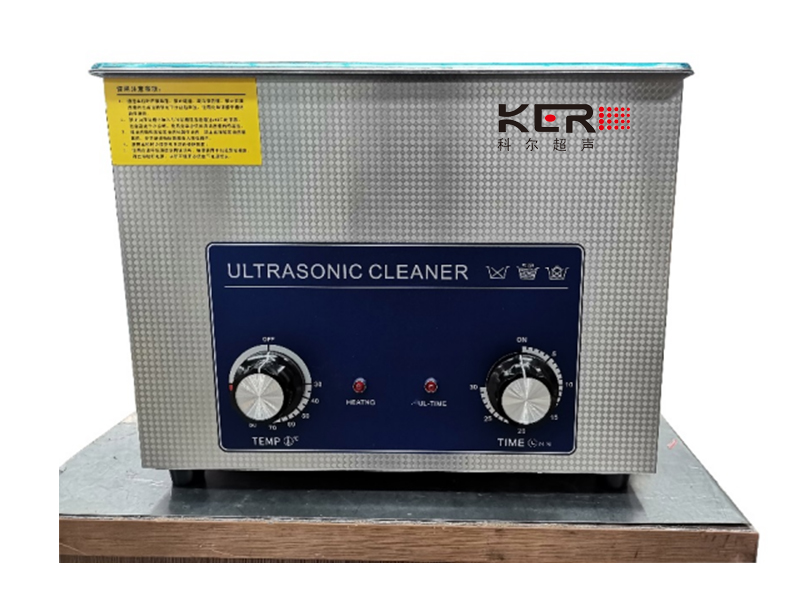
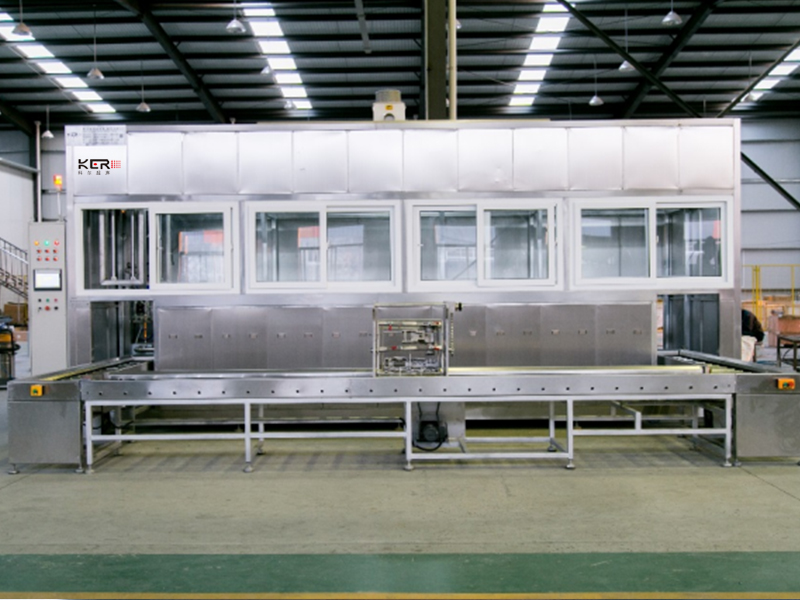
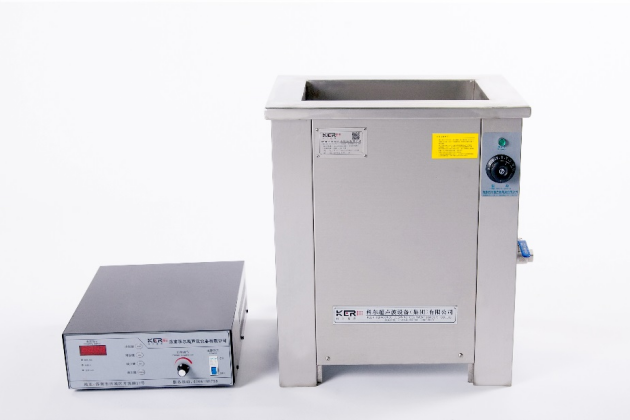
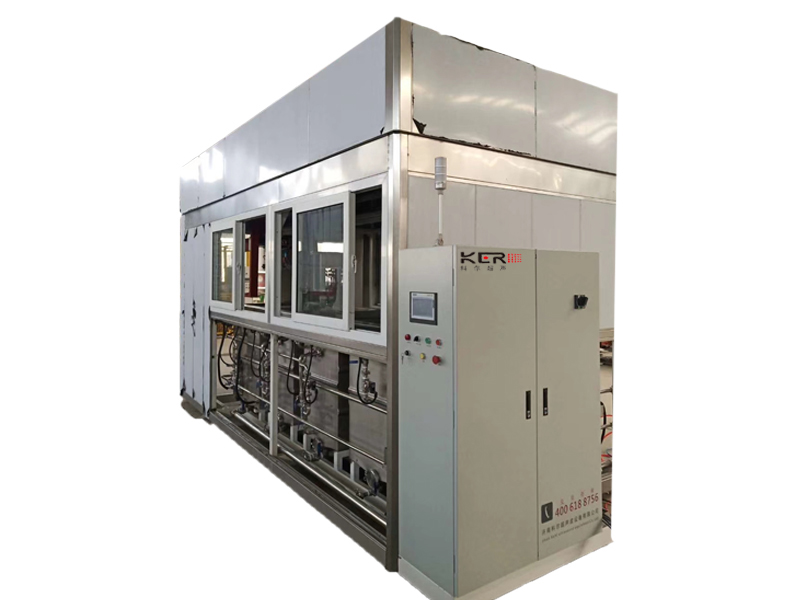
 公司动态
公司动态
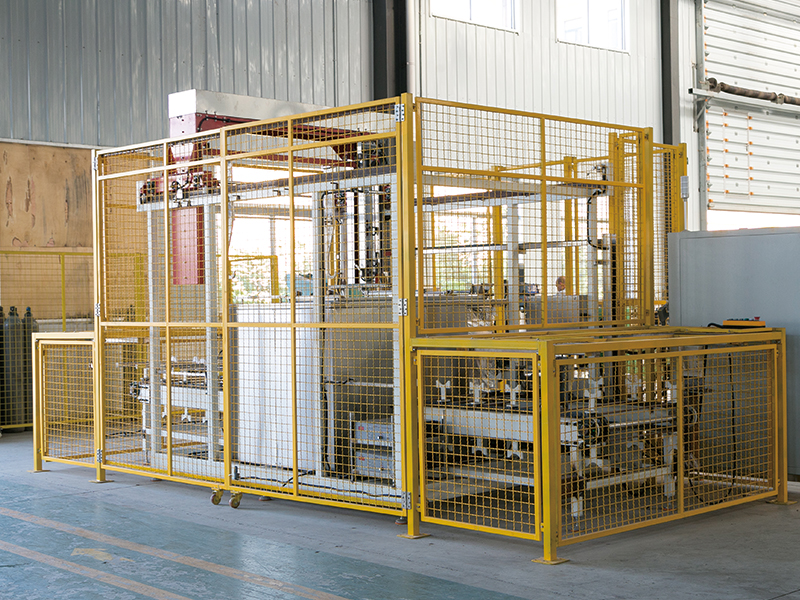
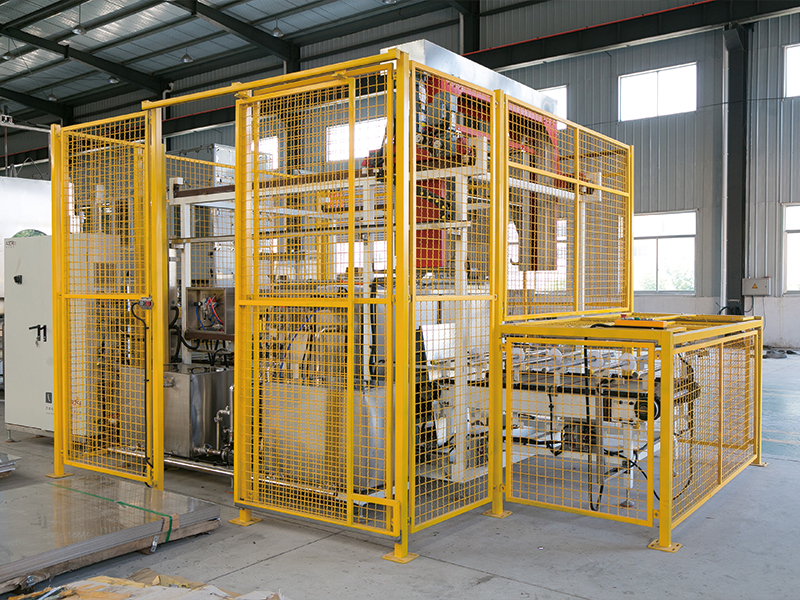
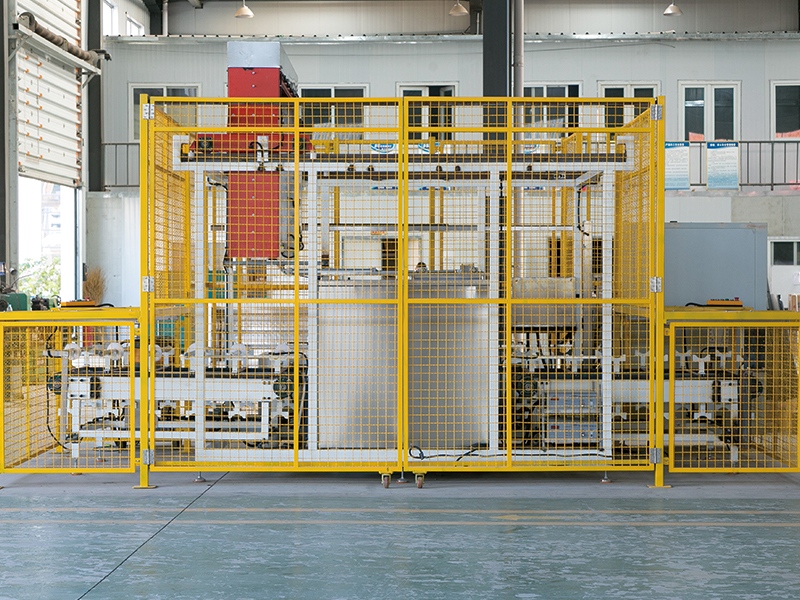
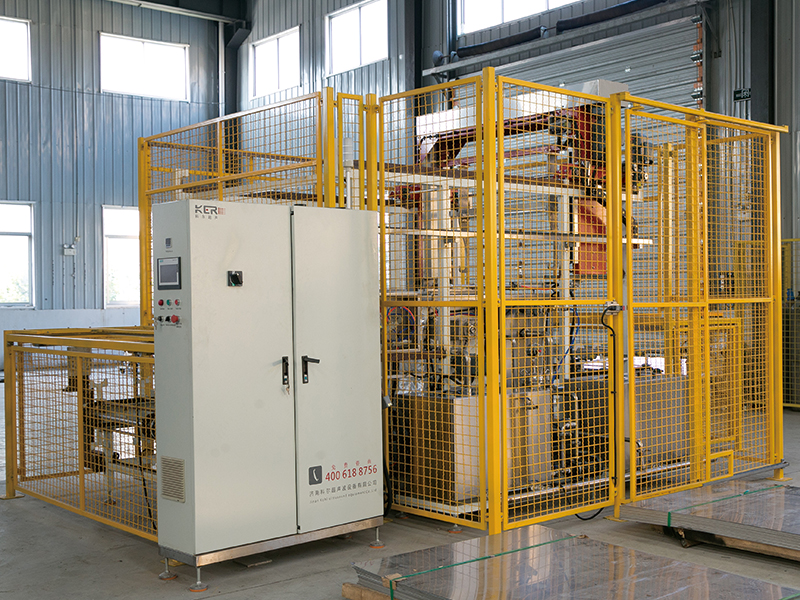




 鲁公网安备37011202000628号
鲁公网安备37011202000628号